Board layout and components
MSI uses a neat 8 (VDDC) + 2 (MVDD) + 1 (SoC) phase design. The well known IR 35217 from International Rectifier is the PWM controller for Infineon’s 8 integrated, very decent TDA21232 power stages for the GPU (VDDC) and one for SoC. This is an efficient Dr.MOS, which basically amounts to an asymmetric dual MOSFET with an integrated gate driver and a Schottky diode in a common package. For the two phases for the memory (MVDD), MSI (like others) relies on an NCP 81022, a digital 2-phase voltage regulator from ON Semiconductor, which drives a slightly smaller NCP302155 (also ON Semi) power stage, which offers a lower power, but has a very similar design. These smaller power stages can also be found on the VDDCI.
MSI uses a very long PCB with very few active components on the back. A second 8-pin connector gives an 8+8 combination, which is intended for OC and looks more brute than what the card consumes at the end. All VDDC phases for the GPU and MVDD, SoC and VDDCI are powered by the two external PCIe sockets, from the motherboard slot (PEG) come only the voltages for the remaining loads (approx. 22 watts maximum).
Die nachfolgende Tabelle enthält noch einmal die wichtigsten Komponenten:
Cooler Design
The upper cover carries the two fan modules, each with 14 rotor blades and 9.8 cm diameter (opening 10 cm). Below is a two-piece cooling block with vertically aligned fins and a total of five 6 mm heatpipes and a thick 8 mm heatpipe. All heatpipes are made of copper composite material and are nickel plated. The GPU cools MSI via a nickel-plated copper heatsink, which is also thermally connected to the underlying cooling frame for the storage by means of heat conduction pads.
The memory is cooled (once again) by a special cooling frame (sandwich design) and we notice again the halved heat conduction pads, about which the Evoke had already been medially quite outdone. But I’ll go into this in detail soon. More important is the fact that the areas of the voltage converters are actively cooled by a heatsink in the main cooler, which is exemplary and meanwhile also self-evident.
The backplate absorbs the waste heat from the GPU and memory area and is thus integrated into the cooling system. The rest is of an optical nature and serves above all to stabilize the circuit board.
Memory gate or storm in a water glass?
If we first look at the initial situation, then we see that the GPU heatsink covers already the both upper modules partially. The holes of the cooler mounting are in this area and one would probably end up with the same problem of an unequal pressure load as Nvidia on the GeForce RTX 2080 Ti with thermal pads. The one module with the photomontage of a real IR scan of the module surface (from a passive mod of an RTX 2060 with identical memory) is by the way a good proof that the waste heat is not emitted over a large area over the whole package.
The package is not only significantly larger than the actual silicon, but the GDDR6 modules are a so-called flip-chip layout. The silicon, including the contacts, lies almost directly above the PCB, where most of the heat is or could be emitted. Therefore one decided to cool the backside via the backplate. Arctic also practices a similar variant with the Accelero Extreme IV, which works quite well.
Per module approx. 2 Watt of own waste heat are due, which is a quite small item. If you look at the back of the board, which can represent the module temperature due to the whole through-plating, you will notice that the fully cooled modules between VRM and GPU are much warmer! These temperatures also result from the whole copper in the multi-layer board and the high currents in the incoming tracks.
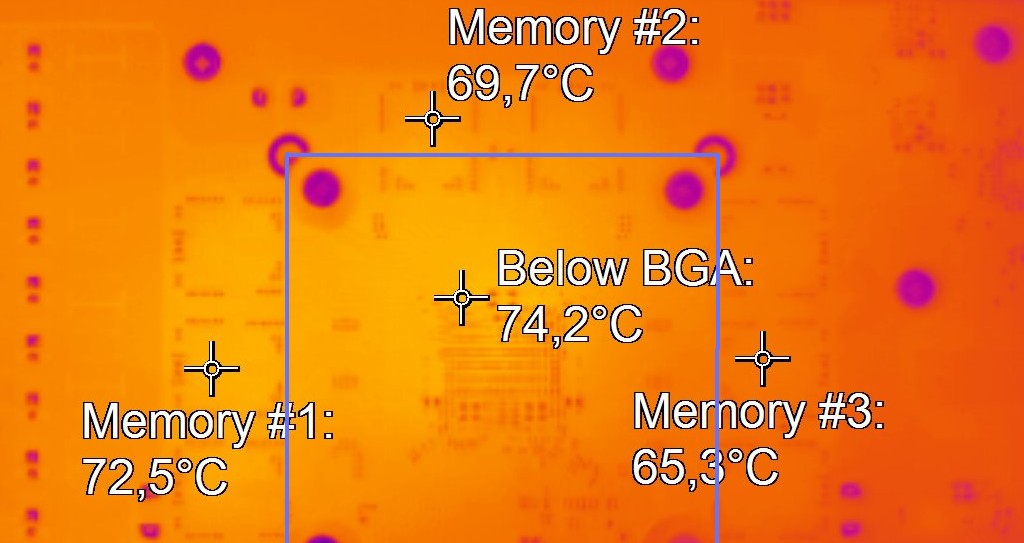
The measurements come from a run in a closed case with almost 270 watts of power consumption, which is hard to top. If you also look at the right of the two upper modules from the back, you can already see that the half pad leaves no visible effect. A check-up with an inserted probe on the exposed, uncooled top side of the left RAM module even showed a slightly lower temperature than the one on the back of the board! The cooling of the modules on the backside by the backplate could lower the PCB temperature by about 3 degrees, which is sufficient.
So it doesn’t look nice and MSI could have (and should have) solved it better and differently during the construction. But these “half” pads (savings per board approx. 0.1 Cent) do not influence the cooling performance and whoever claims the opposite here sensationalistically, happily celebrates click bait.
| Cooling System |
|
|---|---|
| Cooler: | Air Cooling |
| Heatsink: | Copper, nickel plated |
| Fins: | Aluminium, vertikally orientated narrow |
| Heatpipes | 5x 6-mm Heatpipes, 1x 8 mm Heatpipe |
| VRM Cooling |
Heatsink (Main Cooler) |
| RAM Cooling |
Cooling Frame |
| Fans: | 2x 9,8 cm fans, 14 Rotor Blades Fan-Stop |
| Backplate | Aluminium Cooling Function (GPU, Memory) |















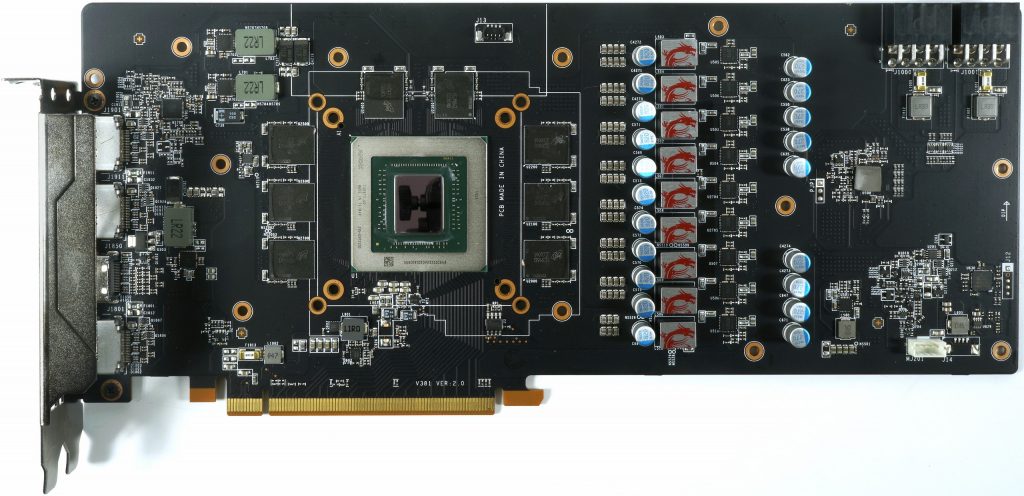
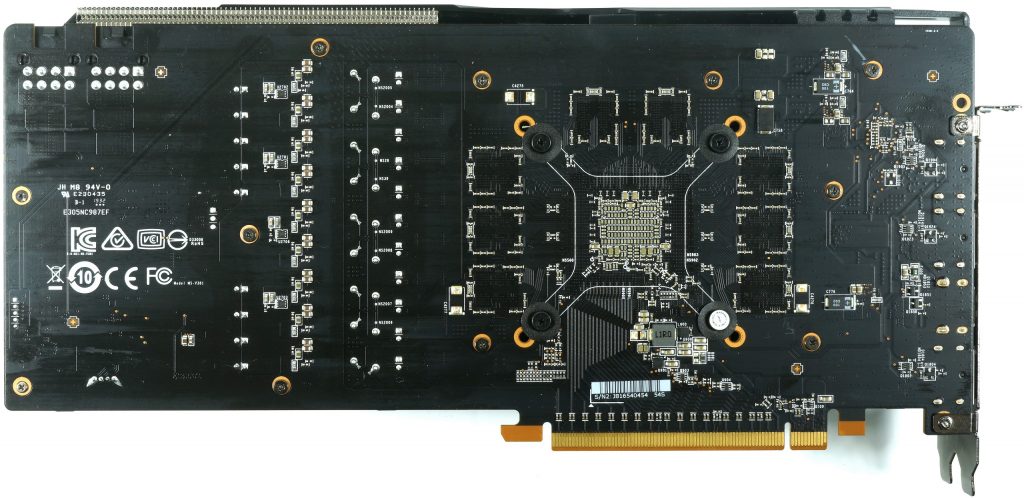
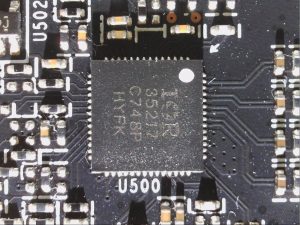
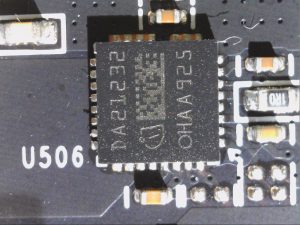
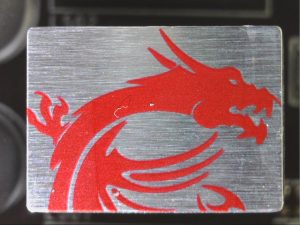
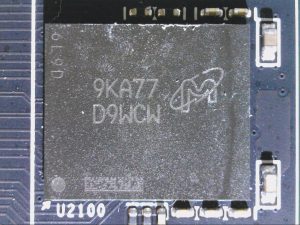
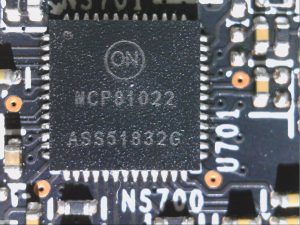
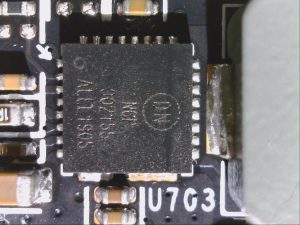
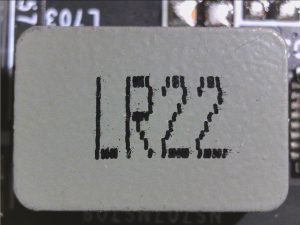
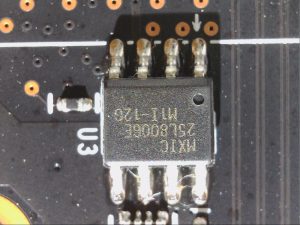

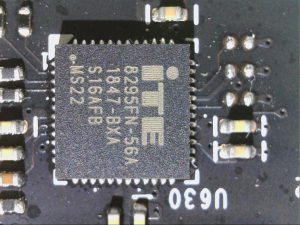
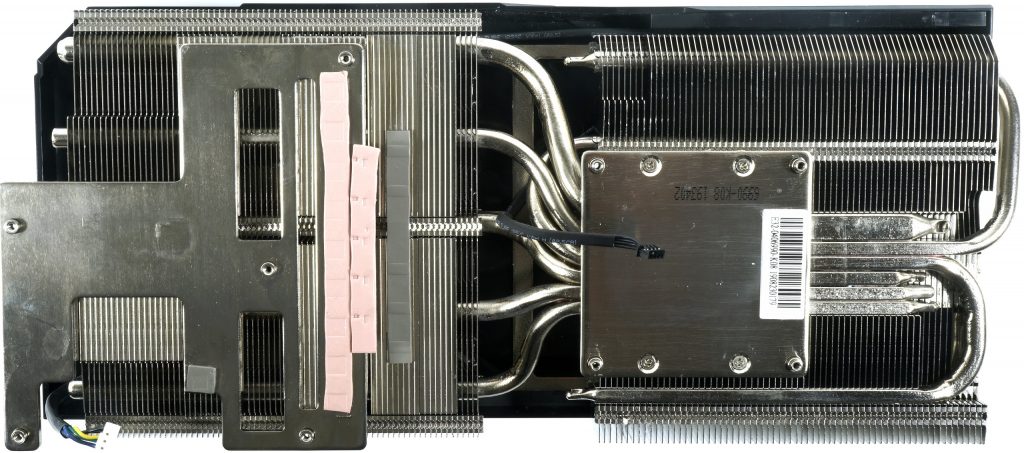
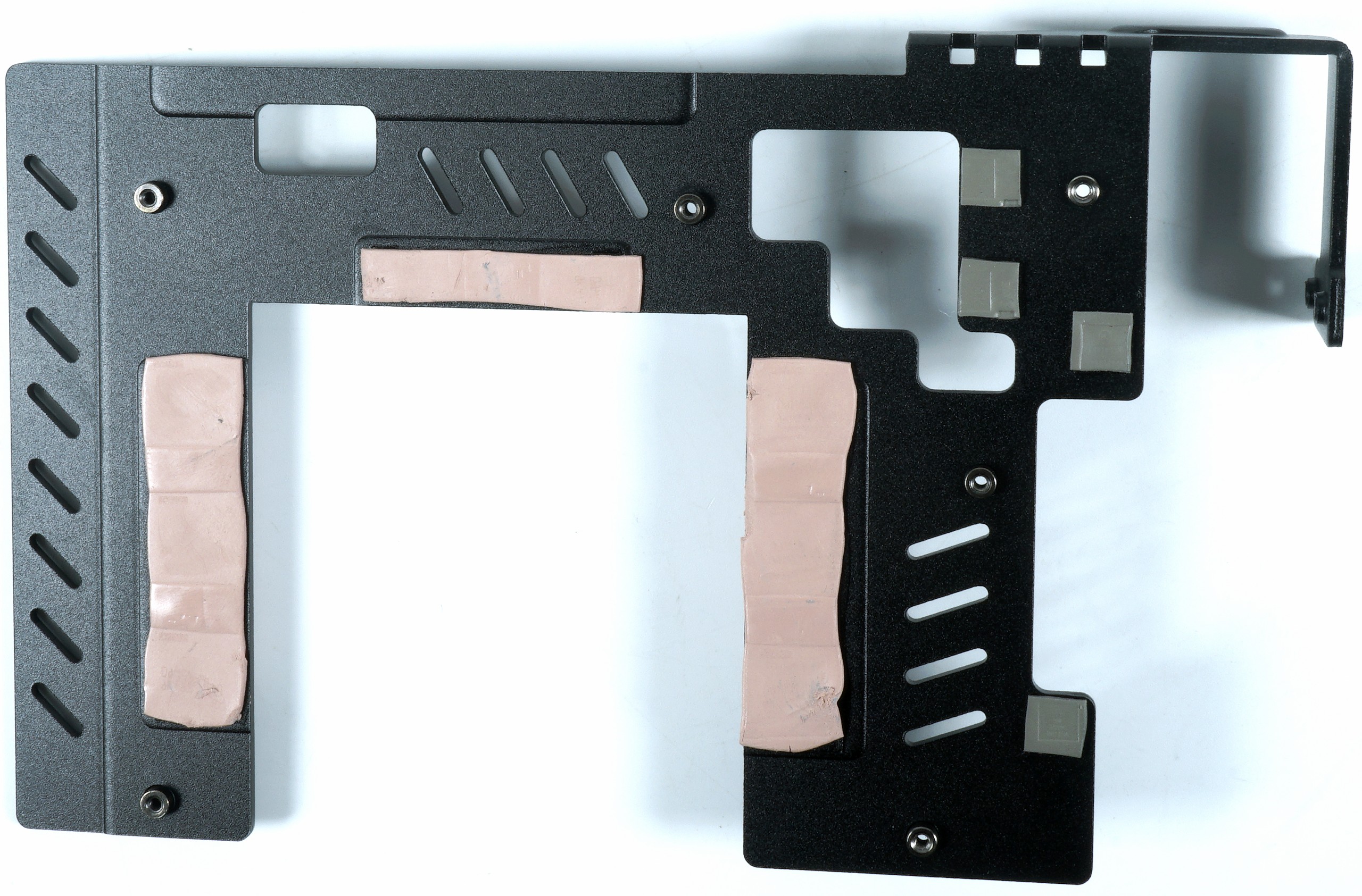
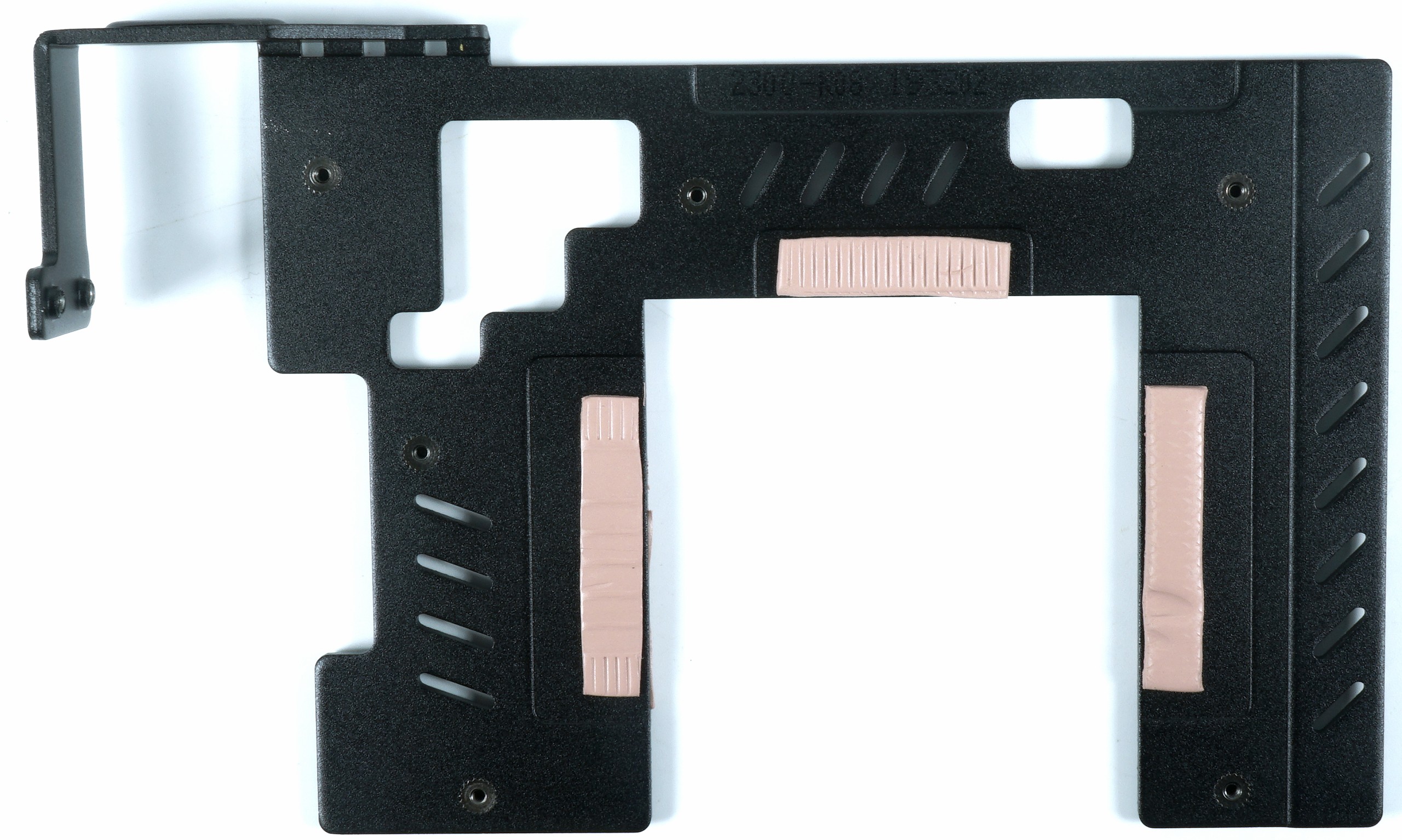

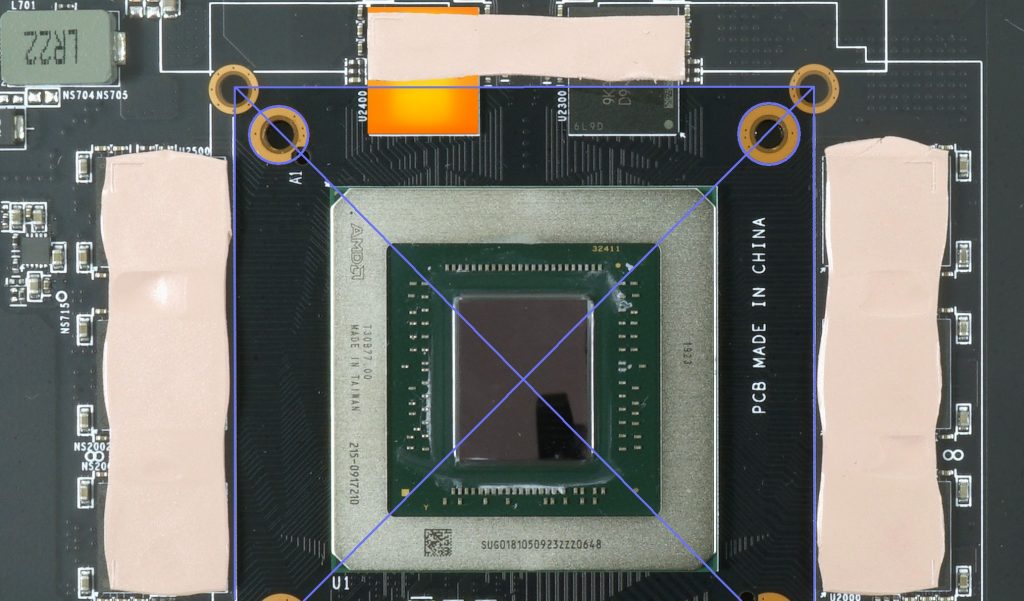

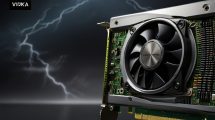

















Kommentieren